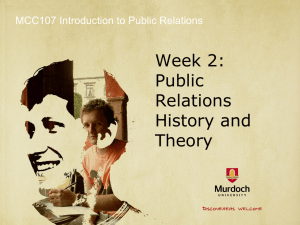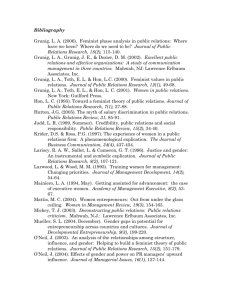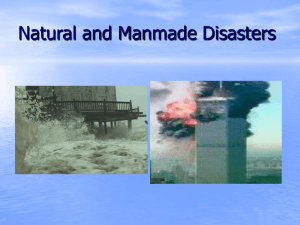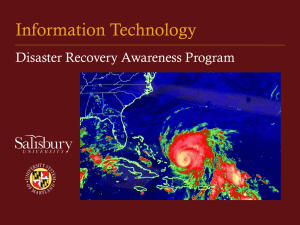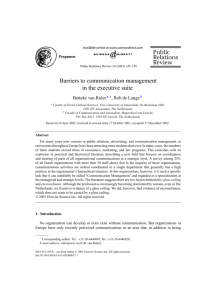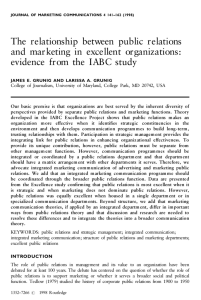The Consequentiality of Risk Communication
advertisement
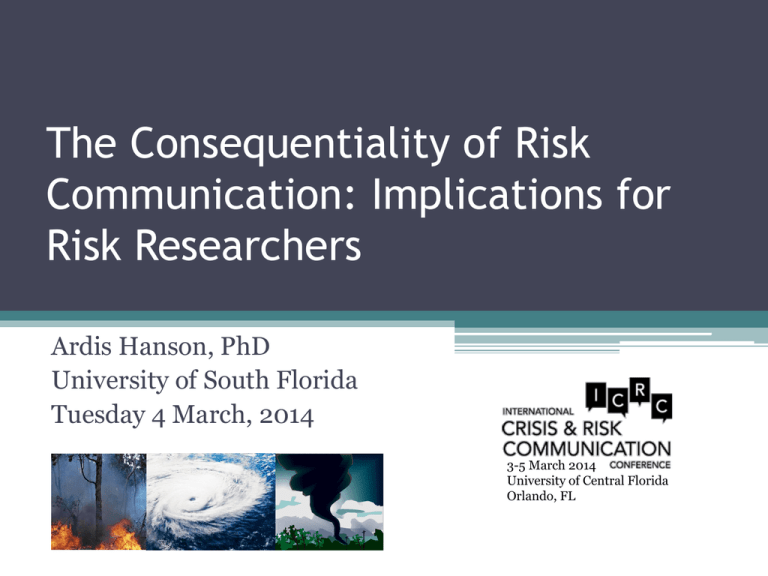
The Consequentiality of Risk Communication: Implications for Risk Researchers Ardis Hanson, PhD University of South Florida Tuesday 4 March, 2014 3-5 March 2014 University of Central Florida Orlando, FL U. S. Disaster Declarations Year Major Disaster Emergency Fire Mgmt Assistance Total 2014 5 4 0 9 2013 62 5 28 95 2012 47 16 49 112 2011 99 29 114 242 2010 81 9 18 108 2009 59 7 49 115 2008 75 17 51 143 2007 63 13 60 136 2006 52 5 86 143 2005 48 68 39 155 1258 declarations 10 years http://www.fema.gov/disasters/grid/year Federal interest • PPD-8 • Strategic National Risk Assessment (SNRA) ▫ All-Hazards Approach ▫ ▫ 5 Planning Frameworks: Prevention, Protection, Mitigation, Response, Disaster Recovery • National Preparedness System • Risk: With what frequency is it estimated that an event will occur, and what are the consequences of the incident(s) if it does occur? • Mitigation Framework: ongoing communication and coordination among all parties involved in preparing and delivering capabilities. • Response Framework: 14 core capabilities: planning, public information and warning, operational coordination, transportation, environmental response/health and safety, fatality management, infrastructure, mass care, mass search and rescue, on-scene security and protection, operational communications, public and private services and resources, public health and medical services, and situational assessment. What is missing in these documents? • Crosswalking crisis definitions • Defining risk as more than probability and frequency of potential incidents • Defining risk communication as a complex event that requires shared understanding • Defining coordination as more than just as an activity that is ‘understood’ • Addressing risk communication as a situated, in the moment decision making process Defining ‘crisis’ • The National Framework Incident Categorization: 7 categories of crisis incidents • FEMA: 7 types of crisis events, including ▫ natural disasters and pandemics (11), ▫ technological and accidental hazards (4), and ▫ terrorist hazards (6). • Coombs (1999): 9 crisis types • Millar (2004): 16 business organizational crises • Seeger et al. (2003): 9 types Defining ‘crisis communication’ • Communication activities of an organization facing a crisis • Emergency management or mitigation • Risk communication ▫ issue management communication • Crisis and emergency risk communication How is risk explicated? • Through discursive and linguistic strategies found in the talk and texts (institutional documents) generated from disaster preparedness, planning, or mitigation and postdisaster evaluation. • The way we communicate about crisis reflexively constitutes crisis itself and our ability to manage it (Luhmann, 1993) Consequentiality Sigman, S. J. (1995). The consequentiality of communication. Hillsdale, NJ: Lawrence Erlbaum Associates. • What persons do during social interactions has an impact on their lives, the institutions in which they work or use, and the relationships they establish. • Resides in “the ebb and flow of the communication process” ▫ continuous negotiation and renegotiation of the production of meaning and shared understandings. • Differs from a communication effect • Considers the “procedures, dynamics, and structures of communication,” not necessarily just of the end results • Has material and political-legal consequences in disaster and risk management Mehan, H. (1983). The role of language and the language of role in institutional decision making. Language and Society, 12(2), 187-211. Fairclough, N. (1992). Discourse and text: Linguistic intertextual analysis within discourse analysis. Discourse and Society 3(2): 193-217. The politics of representation • Numerous professional and institutional discourses • Representations of how things were, of how things are, and how things may, or could, or should be. • How language is used in text or talk to assign meaning to groups and their activities • Modes of representation vary on perspective • Are persuasive or dictated ▫ “decisions are presented, not discussed; credentialled, not negotiated” Caveats on disaster research • Field research is more difficult when it is compounded by the actual circumstances of disasters. • Differences in methodologies make generalization of the decision making process problematic • The term ‘risk communication’ is not transparent and is semantically complex • Disaster research falls primarily into the closely related fields of crisis and risk communication • Characterized by disciplinary perspective and by broadly chronological phases • Competing conceptual approaches Complexity? No kidding. • In their detailed review of four disaster case studies, Dynes and Quarantelli (1977) generate no fewer than 294 propositions on disaster communication. Dynes, Russell R. and Enrico L. Quarantelli. 1977. Organizational communications and decision making in crises. Newark, DE: University of Delaware Disaster Research Center. Crisis communication models • • • • • • • • • Apologia theory (Ware and Linkugel, Rosenfield, ) Kategoria and apologia (Ryan) Enactment theory (Weick, Deetz, …) Chaos theory (Lorenz, Sellnow, …) Organizational learning theories (Cyert and March, Weick, Agyris, …) Mental Models (Maps, Johnson-Laird & Byrne) Rational Actor Theory (Smith) Situational Theory of Publics (Grunig) Press Agentry/ Publicity Model (Grunig & Grunig) ▫ ▫ ▫ • • • • • • • • • • • • • • • • Public Information Model (Grunig & Grunig) Social Science Model (Two-way Asymmetric Model Grunig & Grunig) Mutual Understanding Model (Two-way Symmetric Model Grunig & Grunig) Dialogism (Bahktin) Narrative Social-Mediated Crisis Communication (Jin & Liu) Audience Psychology/Behavior Image Restoration Theory (Benoit) Situational Crisis Communication Theory (Coombs) Community Agency Model Ecological Model of Disaster Planning (Bronfenbrenner inter alia) Two-Factor Model (Mowrer) Caplan’s Crisis Model Crisis Susceptibility Model (Slatter) Arnold’s Model of Crisis Management Process Model of Crisis Development (Booth) Crisis Life Cycle (Seymour & More) Risk Management as Strategic Process (Clark & Varma) Smith Model of Crisis Management 1. Rhetorical models 2. Theoretical models on corporate apologia and impression management 3. Issues management and risk communication 4. Psychological and sociological behavior models 5. Risk and safety models 6. Ex post facto reporting 7. Practitioner-oriented applications 8. Theoretical model building Language, discourse, power, politics … PREPARE, MITIGATE, RECOVER • Develop and enhance communication networks • Increase flow of relevant information • Facilitate dialogue • Evaluate effective channels and interactional activities between levels of governments, communities, and NGOs • Influence public response to hazard warning systems • Effective preparation and recovery information campaigns • Improve social and cultural issues responses to disasters • Communication’s role in creating disasters • • • • • • • • • • • • • • • • • • • • • • • Social construction of disaster Discourse (talk and text) Decision making Sensemaking and uncertainty Regulatory and statutory language Organisational communication Transmission and processing of information Communication networks Individual & organizational identity Sociopolitical environments Leadership Decision making Social support Persuasion Power relations Conflict Technology Grounded practical theory Strategic ambiguity Structuration theory Narrative analysis and ethnography Rhetoric and persuasion Symbolic and semantic structure and contexts Recommendations • Research perspective that takes into consideration the consequentiality of communication, which moves beyond the end results of a risk or crisis event and considers the procedures, dynamics, and structures of communication. ▫ Symbolic negotiation of meaning in a variety of contexts as well as professional and lay communities ▫ More work on the science of communication, the ‘how’ by which we process messages from the scientific community
